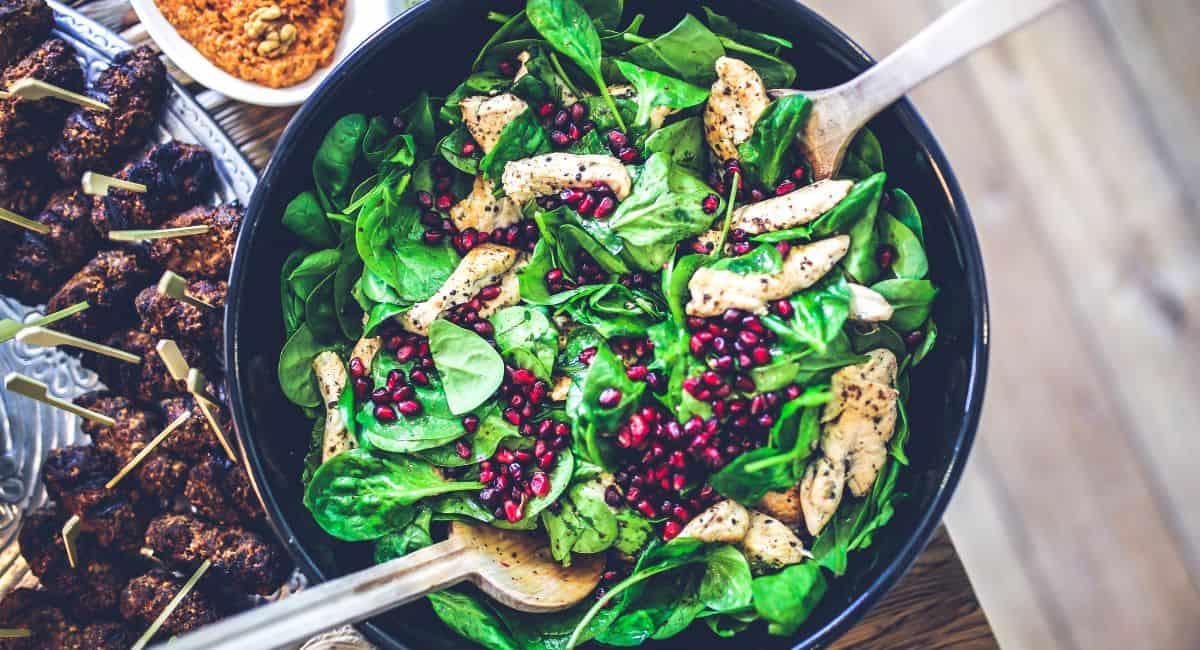How Much Protein Does Spinach Have: Unveiling Nutrition Facts
Spinach is widely recognized as a powerhouse of nutrition. For this reason, people wonder about its protein content.
Per 100 grams, raw spinach contains 2.86 grams of protein. Cooked spinach increases protein content by providing 2.97 grams of protein per 100 grams and 5.35 grams per one cup.
This protein content makes spinach an excellent choice for those looking to increase their protein intake without consuming high-calorie foods.
This article will include the protein content for raw and cooked spinach. In addition, how it ranks for protein compared to other popular green vegetables.
Protein Profile of Spinach

As a Certified Health Coach, many people ask me about spinach including its protein and other nutrients. I also consume spinach almost daily and have researched this topic for more than one reason. Let’s examine the protein content of spinach.
Protein Content in Fresh Spinach
For those looking to increase their protein intake, spinach is a worthy vegetable addition to the diet. It provides a non-animal source of beneficial protein for vegans and vegetarians alike.
Protein is vital for the repair and growth of tissues, and spinach contributes to this nutritional need.
The protein content varies slightly depending on whether spinach is consumed raw or cooked. According to the USDA, let’s examine fresh spinach:
| Serving Size | Protein Content |
|---|---|
| 1 cup (30g) fresh | 0.86 grams |
| 100g fresh | 2.86 grams |
Protein Content in Cooked Spinach
Indeed, cooking spinach can concentrate the protein per volume due to water reduction. Let’s take a look.
| Serving Size | Protein Content |
|---|---|
| 1 cup (180g) cooked | 5.35 grams |
| 100g cooked | 2.97 grams |
Whether included in salads or added to cooked dishes, spinach remains a reliable source of protein among leafy greens.
Spinach Protein Rank Compared to Other Vegetables
Spinach is often recognized for its relatively high protein content among vegetables. When it comes to leafy greens, spinach stands out due to its impressive protein ratio.
Although, in comparison to other vegetables, particularly leafy greens, it doesn’t rank the highest in protein content.
A closer look at spinach reveals that:
- Raw broccoli, brussels sprouts and peas contain more protein than raw spinach.
Let’s put this in perspective with a comparative analysis of popular vegetables:
| Vegetable | Protein (per 100g) |
|---|---|
| Raw Spinach | 2.86g |
| Raw Kale | 2.92g |
| Raw Broccoli | 2.82g |
| Raw Brussel Sprouts | 3.38g |
| Raw Peas | 5.42g |
It’s evident from the data that while spinach has a strong protein content, it does not top the list of high-protein vegetables. However, it contains other vital nutrients which contribute to its overall nutritional value, making it a powerful addition to a balanced diet.

Spinach also stands out because it nearly meets the complete protein criterion, meaning it contains a good range of essential amino acids. It falls slightly short, as it is lower in methionine and cysteine.
Vegetables, in general, are not known to be complete protein sources, which highlights the uniqueness of spinach in this context.
Thus, while vegetables like peas hold a higher rank in terms of protein content, spinach provides a balanced composite of protein and essential nutrients. This solidifies its reputation among high-protein vegetables.
If you have any questions to ask me about this article, don’t hesitate to comment below or email us. You can find an email on our contact page.
Read More Spinach Articles
Article Resources
- USDA: Fresh Spinach
- USDA: Cooked Spinach
